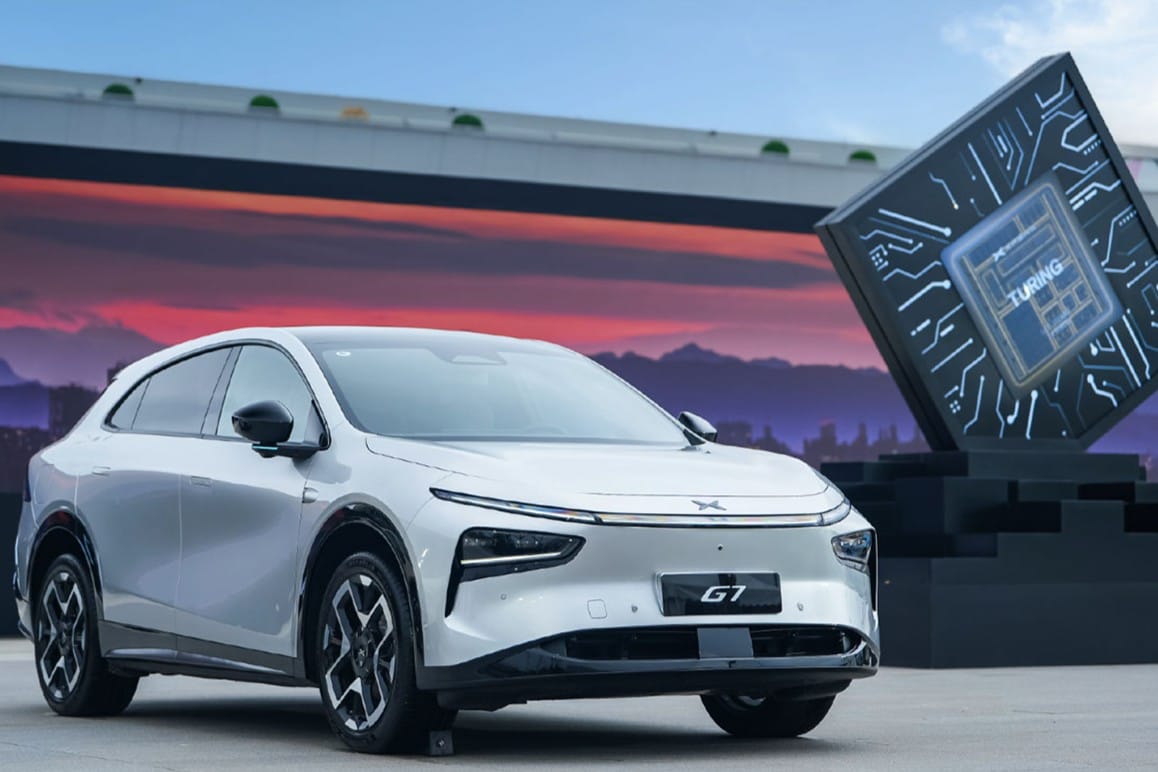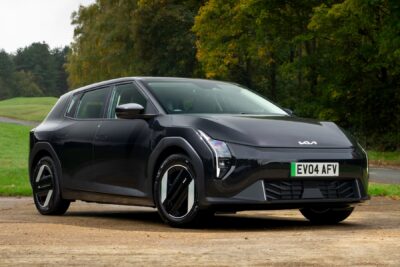Xpeng G7 officially goes on sale in China
Xpeng has officially launched its G7 electric SUV in China, positioning it as a direct competitor to the Tesla Model Y and Xiaomi YU7. The five-seat mid-size SUV starts at RMB 195,800 (€23,200) for the base Max 602 km variant (undercutting Tesla’s Model Y by over 25 per cent), and rises to RMB 225,800 (€26,700) for the Ultra 702 km top trim. That also means that Xpeng lowered the price compared to what it announced when unveiling the car in June.
The G7 is 4,9 m long, so slightly longer than the Model Y. It is built on an 800-volt platform with lithium iron phosphate batteries from CALB and offers two LFP battery options: 68.5 kWh for 602 km and 80.8 kWh for 702 km CLTC range. It also offers 5C charging and can thus charge from 0 to 80 per cent in just 12 minutes. Energy consumption is rated at 10.8 kWh/100 km, and the rear-drive motor delivers 218 kW (292 hp) and 450 Nm torque, achieving 0-100 kph in 6.5 seconds.
This is the first production vehicle equipped with Xpeng’s in-house Turing AI smart driving chip, delivering computing power of up to 2,250 TOPS. That supposedly makes it the most powerful smart driving system in any EV to date. According to the carmaker, the system uses Vision-Language Models and Vision-Language-Action capabilities to enable proactive decision-making, adaptive route planning, and online learning. The G7 Ultra uses three Turing chips – two for smart driving and one for cockpit functions – while the Max variants adopt dual Nvidia Orin X chips with 508 TOPS.
On the exterior, the G7 adopts Xpeng’s second-generation ‘X Face’ design language with a closed front fascia, slim running lights joined by a full-width LED strip, and main headlights integrated into the lower bumper. At the rear, it features a distinctive ‘Star Ring’ taillight and aerodynamic roof spoiler. The SUV’s drag coefficient is 0.238 Cd, marginally higher than the Model Y’s 0.230 Cd, and customers can choose from six body colours including dark grey, silver, white, black, beige, and green.
The interior of the G7 has a minimalist design centred around a 15.6-inch display. Comfort features include seats with ventilation, heating and massage functions, an audio system with 20 loudspeakers, ambient lighting and an 8-inch control screen in the rear. The second row of seats also has a folding table with magnetic attachment points behind the front passenger seat. Also on board: a panoramic sunroof and a digital rear-view mirror.
The G7 has a 42-litre front trunk (frunk), an 819-litre rear boot expanding to 2,277 litres with rear seats folded, and an additional 120-litre underfloor compartment in the boot. Xpeng claims the total space can fit up to 37 20-inch suitcases, while the cabin includes a 10.1-litre armrest box and a password-protected glovebox for valuables.
Previously attracting 10,000 pre-orders within 46 minutes, the G7 is expected to boost Xpeng’s market presence significantly. The official launch comes as the company reports strong sales momentum. According to Chinese media, it delivered 34,611 vehicles in June, bringing first-half deliveries to 197,189 units – a 279 per cent increase year-on-year, already surpassing its 2024 full-year deliveries. In May, the carmaker had sold 33,525 units (+230% YoY). Xpeng has set a target to double its deliveries this year, a goal that now appears well within reach.
Nevertheless, the Chinese EV market continues to intensify, with Xiaomi recently launching its YU7 SUV, which also saw a lot of demand. But the price could make all the difference. As one executive put it: “This is not just another EV launch. The G7 is our statement that smart driving leadership must come from within China.”





0 Comments